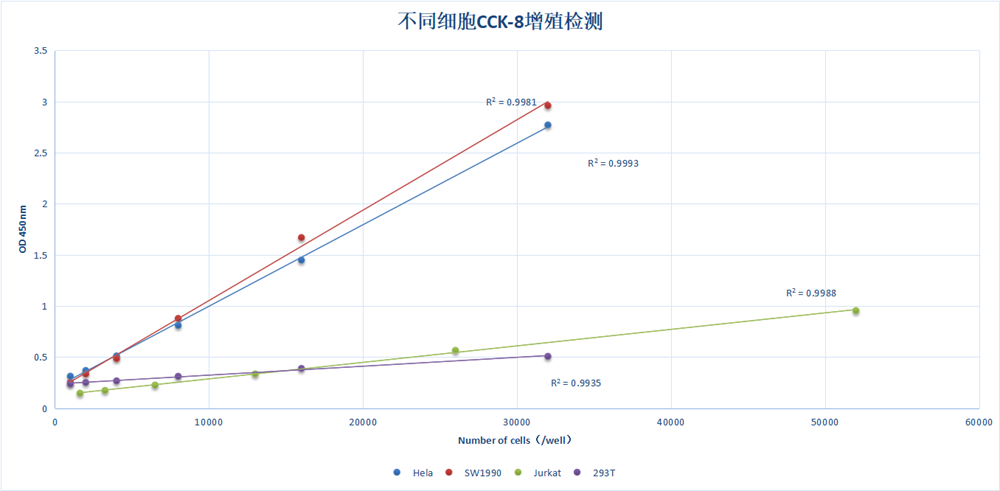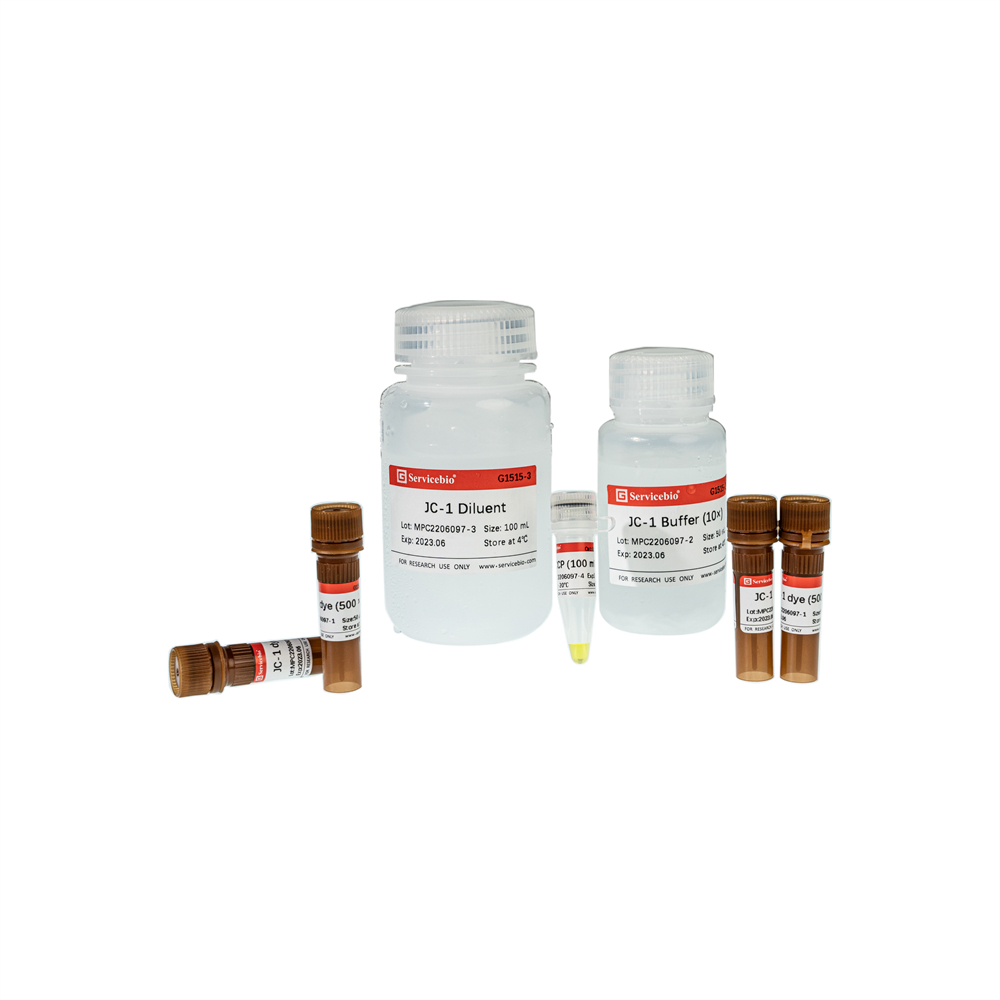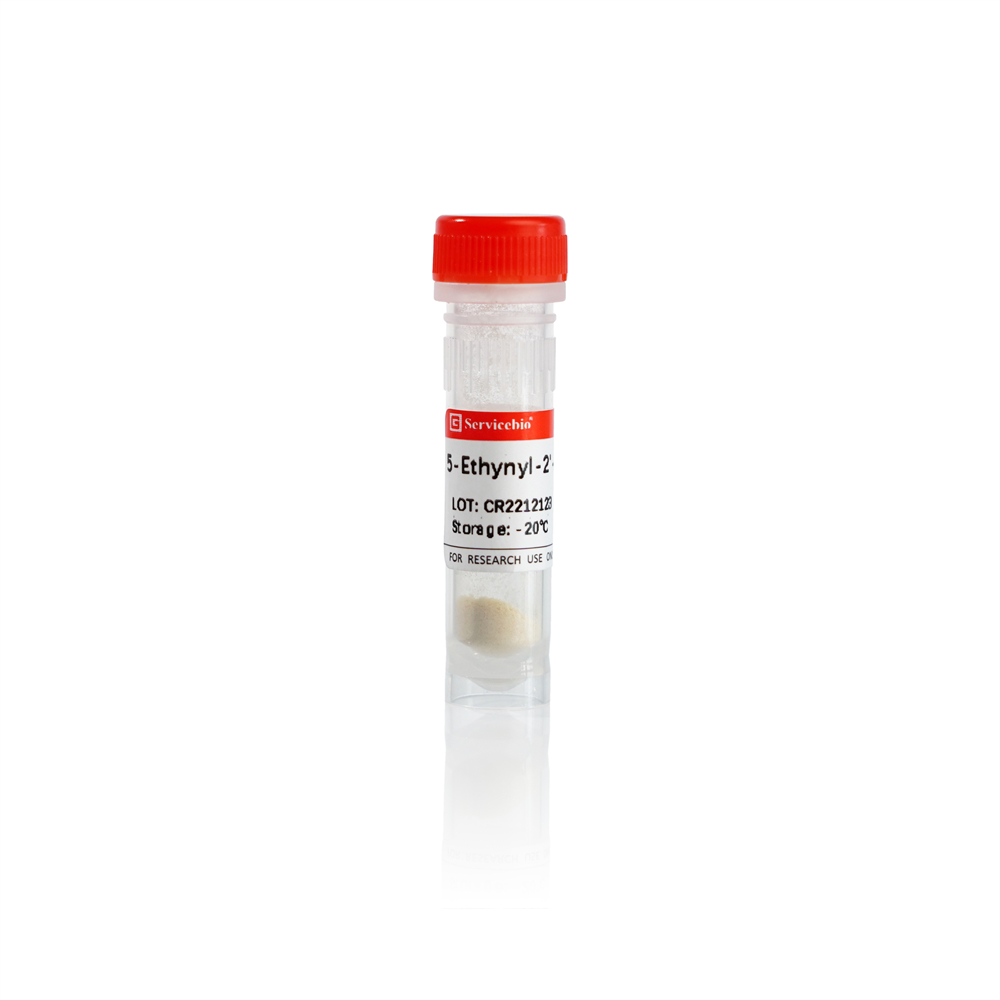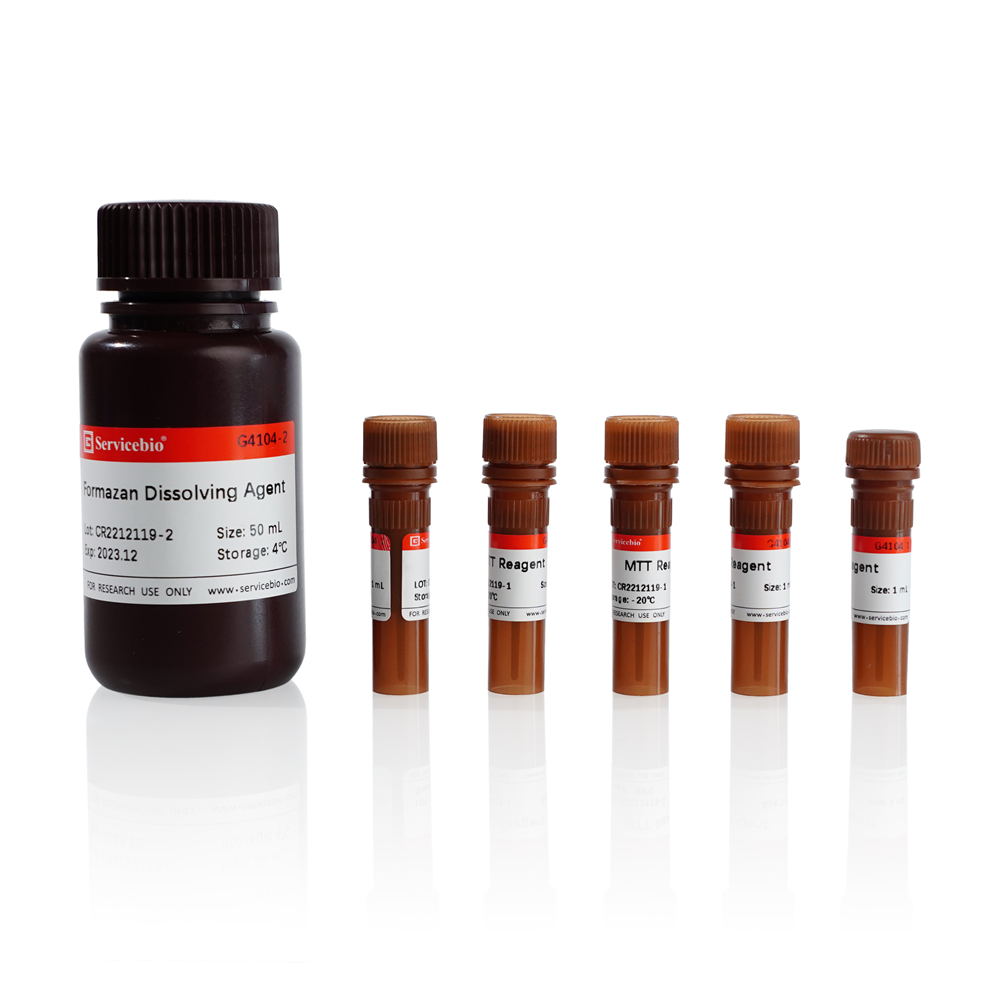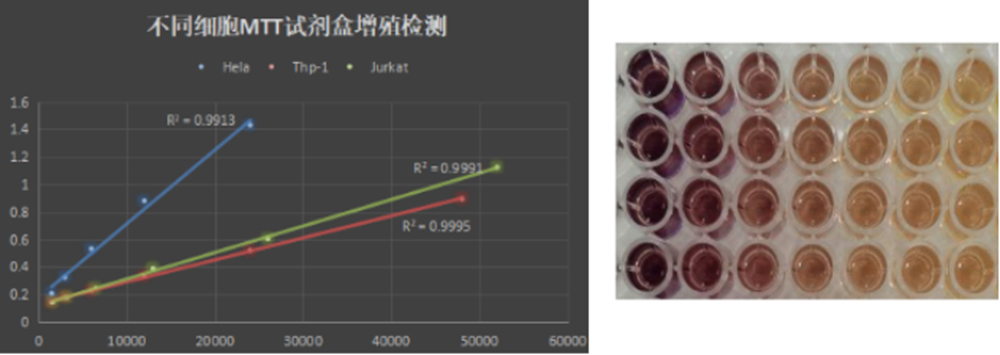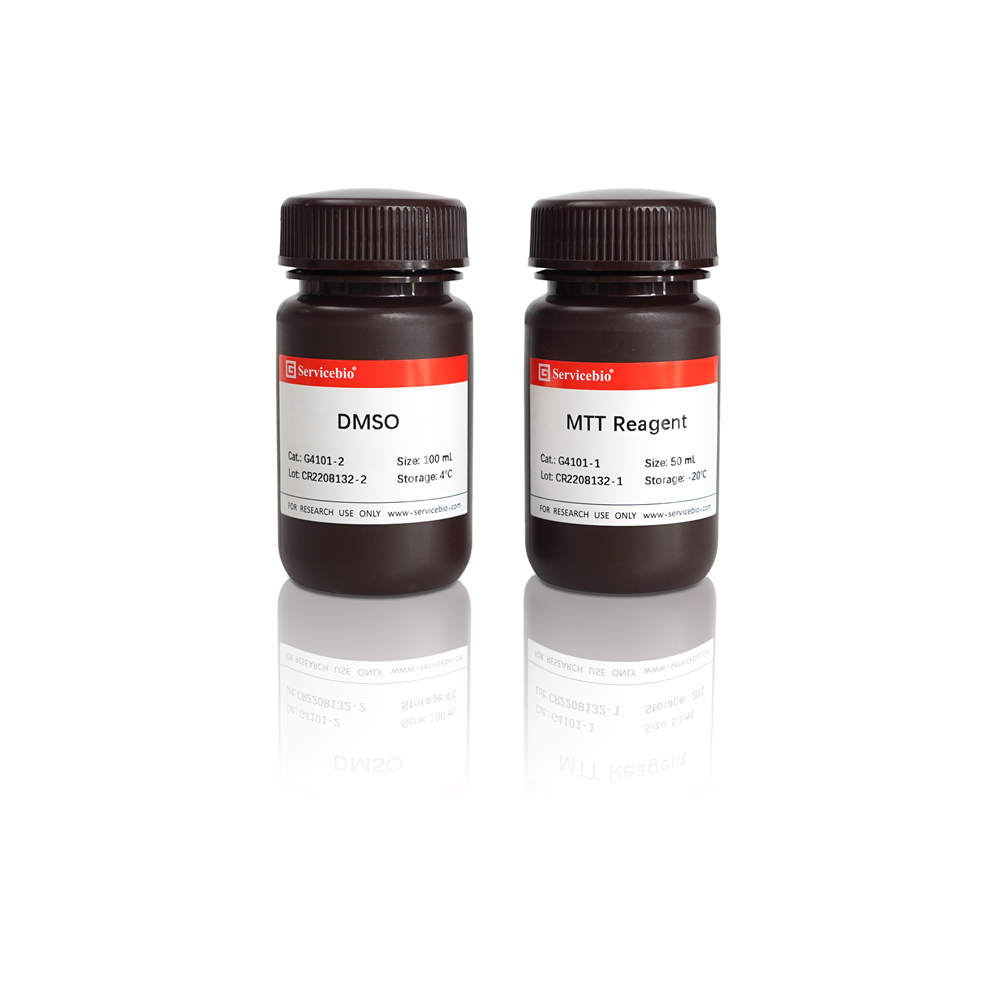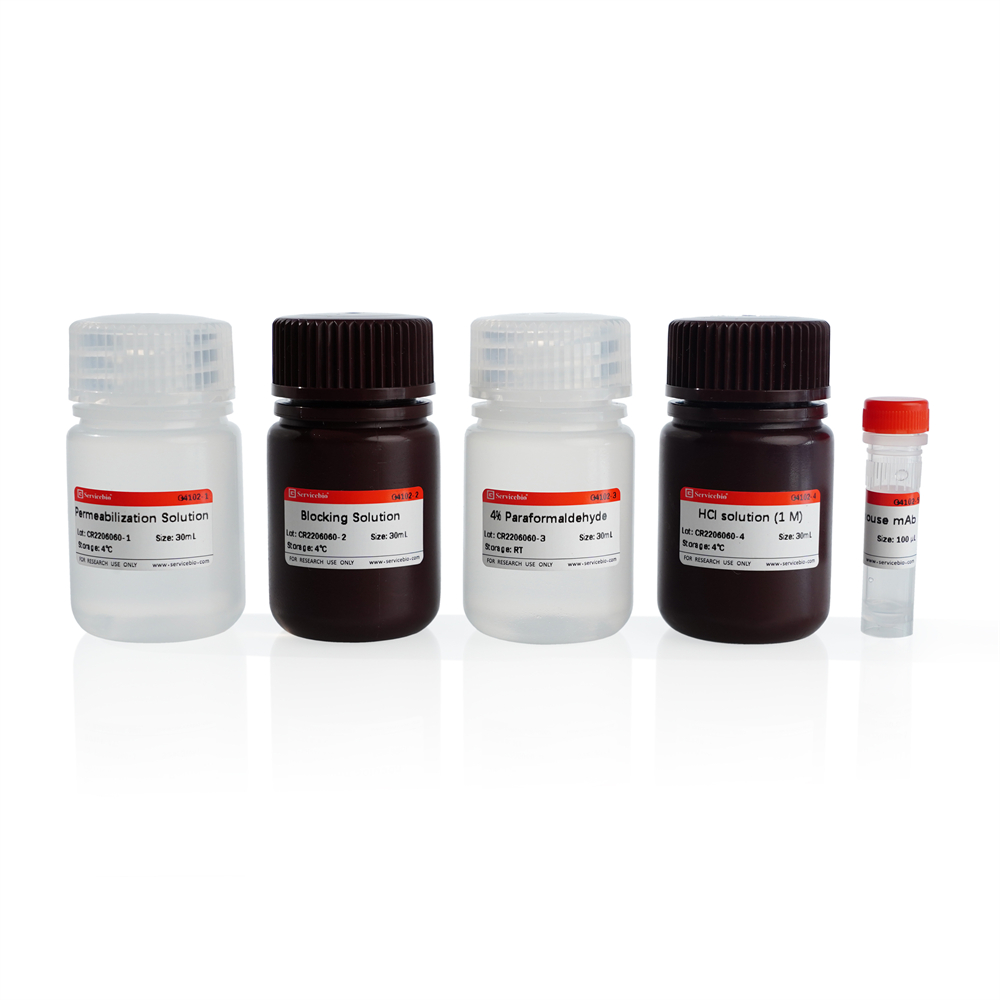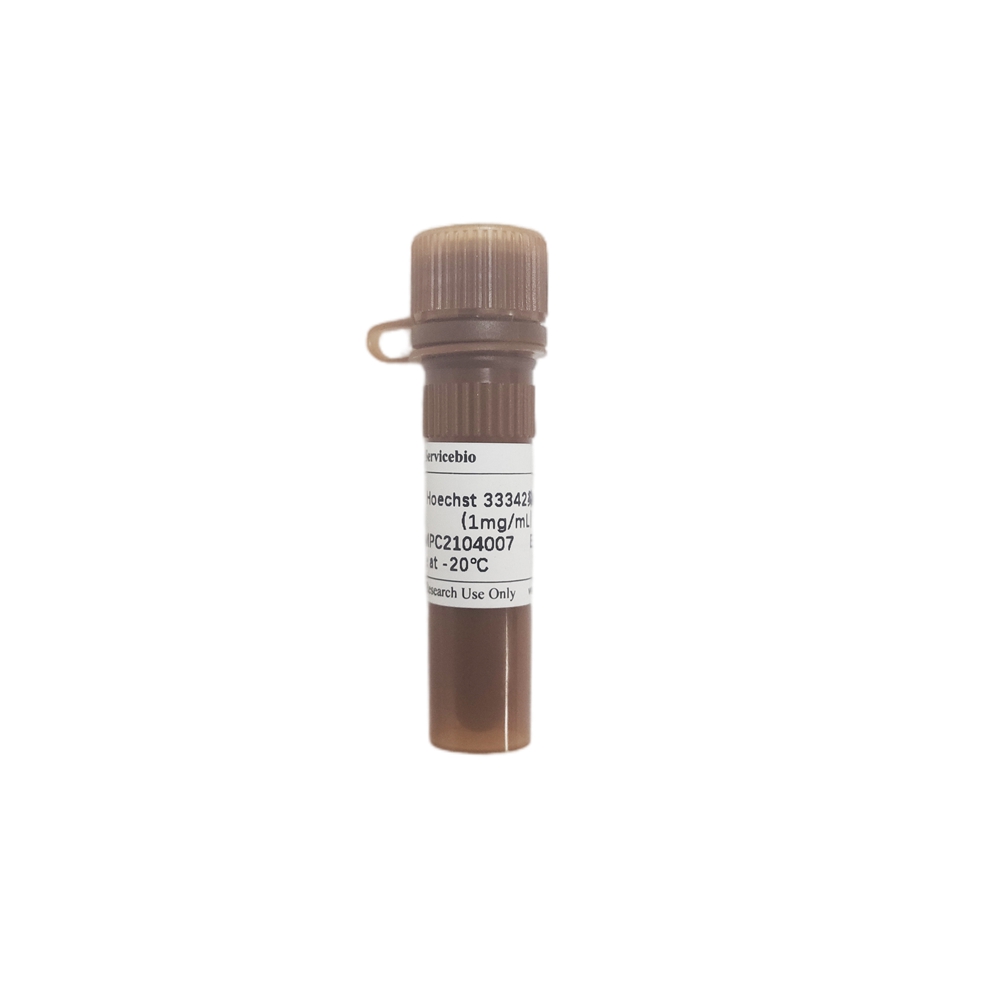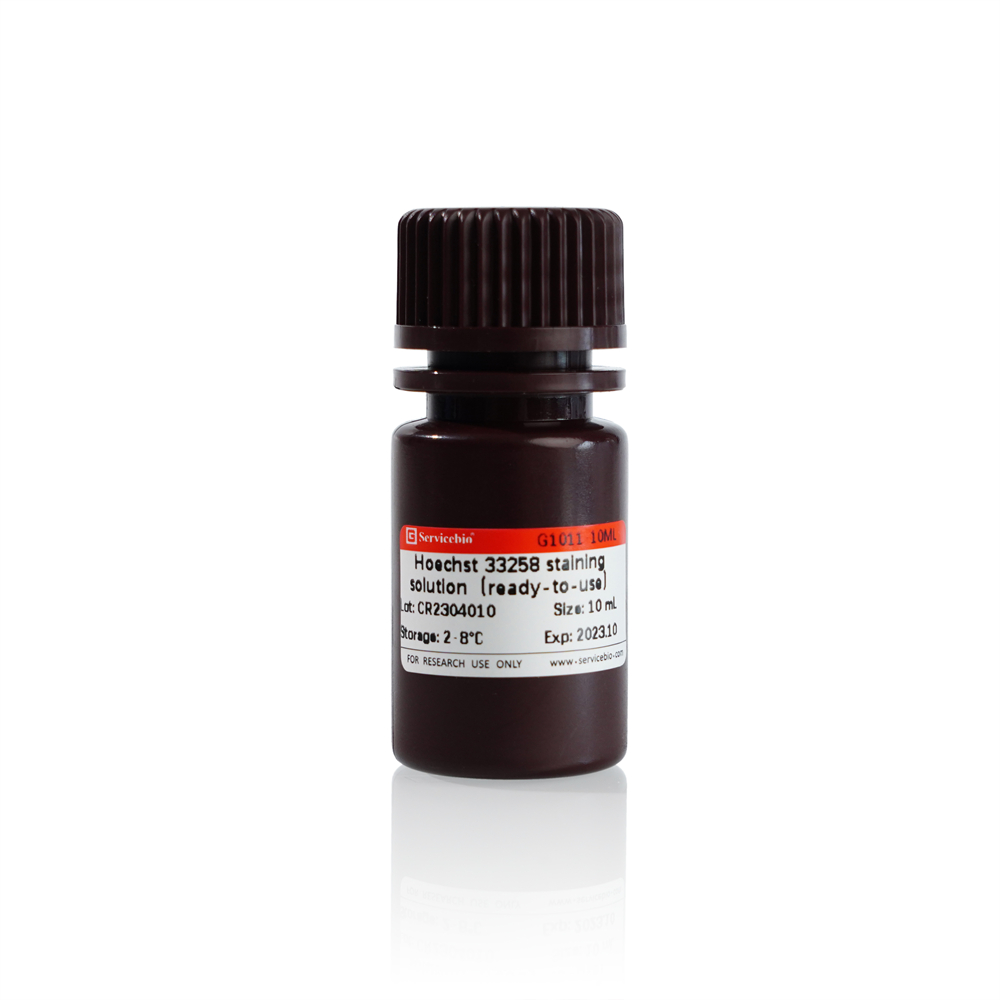Description
Product Information
| Product Name | Cat.No | Spec. |
| Cell Counting Kit-8 | G4103-1ML | 1 mL |
| G4103-5ML | 5 mL |
Introduction
Cell Counting Kit-8, referred to as CCK-8 (or CCK8) kit, is a rapid and highly sensitive detection kit widely used in cell proliferation and cytotoxicity. The detection principle is that in the presence of the electronic coupling reagent, the WST-8 compound in the detection reagent is reduced by the intracellular dehydrogenase to a water-soluble orange-yellow formazan compound, which has a maximum absorption at 450 nm. peak. The amount of formazan is proportional to the number of viable cells, that is, the more and faster the cell proliferation, the darker the color; the greater the cytotoxicity, the lighter the color. For the same cells, there is a linear relationship between the shade of color and the number of cells. The WST-8 in this kit has no obvious toxicity to cells, and can be used for the detection of cell proliferation induced by exogenous cytokines, as well as the detection of cytotoxicity induced by drugs and other cytotoxic reagents, or the detection of cell growth inhibition induced by some drugs. It is an upgraded version of the MTT detection method.
This kit is convenient to use, does not require preparation or dilution, does not need to collect or wash cells, and does not need to re-dissolve the formazan compound. It is suitable for both adherent cells and suspension cells. And phenol red and serum had no significant effect on the determination of this kit.
Storage and Handling Conditions
Transport with wet ice away from light; It is valid for 12 months when stored in the dark at 4°C; it is valid for 24 months when stored at -20°C if not used for a long time.
Components
| Component | G4103-1ML | G4103-5ML |
| Cell Counting Kit-8 | 1 mL | 5 mL |
| Instruction Manual | 1 pc | |
Steps
1. Make a Standard Curve (Perform This Operation When Determining the Specific Number of Cells)
A) Count the number of cells in the prepared cell suspension with a cytometer before seeding the cells.
B) Proportionally dilute the medium in equal proportions to form a cell concentration gradient. Generally, 3-5 cell concentration gradients are required, with 3-6 duplicate wells in each group.
C) After inoculation, culture until the cells adhere to the wall, and then add CCK-8 reagent for a certain period of time to measure the OD value, and make a standard curve with the number of cells as the abscissa (X axis) and the OD value as the ordinate (Y axis). . According to this standard curve, the number of cells in the unknown sample can be determined (the premise of using this standard curve is that the experimental conditions should be consistent, and it is convenient to determine the number of cells inoculated and the incubation time after adding CCK-8).
2. Cell Viability Assay
A) Seed cell suspension (100 µL/well) in a 96-well plate. Pre-incubate the plate in an incubator (at 37°C, 5% CO2).
B) Add 10 µL of CCK-8 solution to each well (be careful not to create air bubbles in the wells, which will affect the OD reading).
C) Incubate the culture plate in the incubator for 2 h.
D) Measure the absorbance at 450 nm with a microplate reader.
E) If the OD value is not to be measured temporarily, if you plan to measure it later, you can add 10 µL of 0.1M HCl or 1% SDS (W/V) solution to each well, and cover the culture plate and store it at room temperature in the dark. Absorbance did not change within 24 h.
3. Cell Proliferation-Toxicity Assay
A) Prepare 100 µL of cell suspension in a 96-well plate. Pre-incubate the plates for 24 hours in an incubator (at 37 °C, 5% CO2).
B) Add 10 µL of different concentrations of the test substance to the culture plate. Incubate in the incubator for an appropriate period of time (eg: 6, 12, 24 or 48 hours).
C) Add 10 µL of CCK-8 solution to each well (be careful not to create air bubbles in the wells, which will affect the OD reading). If the substance to be tested is oxidative or reducing, the effect of the drug can be removed by replacing the medium with fresh medium (removing the medium, washing the cells twice with medium, then adding new medium) before adding CCK-8.
D) Incubate the plate in the incubator for 2 hours.
E) Measure the absorbance at 450 nm with a microplate reader.
F) If the OD value is not to be measured temporarily, if you plan to measure it later, you can add 10 µL of 0.1M HCl or 1% SDS (W/V) solution to each well, and cover the culture plate and store it at room temperature in the dark. Absorbance does not change within 24 hours.
4. Vitality Calculation
Cell viability (%) = [A (dosing) – A (blank)] / [ A (0 dosing) – A (blank)] × 100
A (dosed): Absorbance of wells with cells, CCK-8 solution, and drug solution
A (blank): absorbance of wells with medium and CCK-8 solution without cells
A (0 dosing): Absorbance of wells with cells, CCK-8 solution and no drug solution
Cell viability: cell proliferative viability or cytotoxic viability
Note
1. The detection principle of this kit depends on the reaction catalyzed by dehydrogenase. If there are many reducing agents (such as some antioxidants) in the sample, which will interfere with the detection, try to remove them.
2. It is recommended to make several wells to explore the number of inoculated cells and the incubation time after adding CCK-8 reagent.
3. Leukocytes may need to be cultured for a longer period of time.
4. When using standard 96-well plates, the minimum seeding volume of adherent cells is at least 1,000 cells/well (100 µL of medium). The sensitivity for detecting leukocytes is relatively low, so the recommended inoculation volume is at least 2,500 cells/well (100 µL of medium). If you want to use a 24-well or 6-well plate, first calculate the corresponding inoculum size per well and add CCK-8 solution at 10% of the total volume of medium in each well.
5. If a 450 nm filter is not available, a filter with absorbance between 430-490 nm can be used, but 450 nm has the highest detection sensitivity.
6. The absorbance of phenol red in the medium can be eliminated by subtracting the absorbance of the background in the blank well during calculation, so it will not affect the detection.
7. Avoid generating air bubbles when adding detection reagents, otherwise it will interfere with the detection results.
8. For your safety and health, please wear a lab coat and disposable gloves.
For Research Use Only!
|
Cat.No.
|
Product Name
|
Spec.
|
Operation
|
|---|
|
G0002-2L
|
Phosphate Buffered Saline (PBS, Powder)
|
2 L
|
|
|
G4001-100ML
|
0.25% Trypsin-EDTA (Soluble in PBS,Phenol Red)
|
100 mL
|

